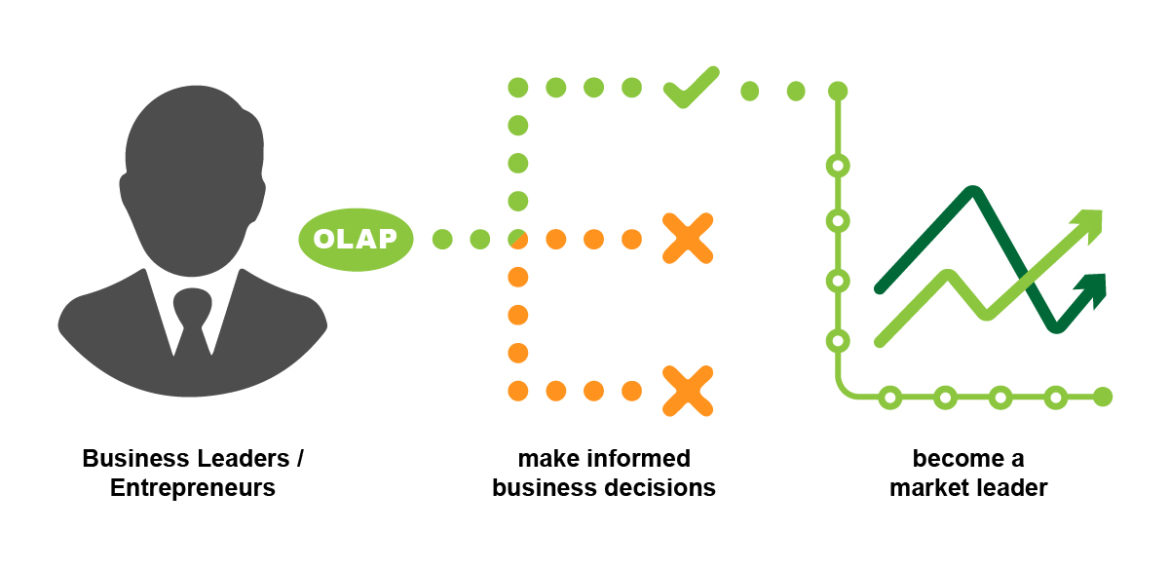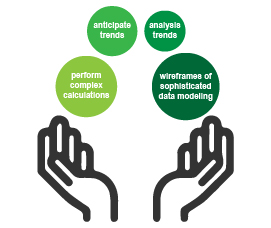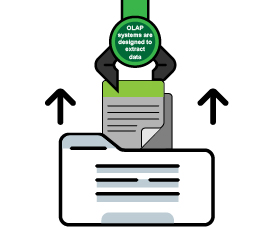In this episode, we are talking about Online Analytical Processing or OLAP, which performs multi-dimensional analysis of data and empowers business to perform complex calculations, anticipate trends, analysis trends and do the math and wireframes of sophisticated data modeling. It becomes the foundation of business in terms of management, ideating concepts, planning, budgeting, financing, forecasting, analyzing, modeling, knowledge discoveries, reporting and what not! It is one of the broader categories of business intelligence that analyses data in multiple dimensions and churn out better decisions for businesses.
Even though it’s vital in today’s business environment, OLAP is getting overshadowed by big data. It is not a new concept. It’s existence and evidence dates back to decades. The concept can be traced way back in the early 1960s. However, it was in the early ’90s where it was officially mentioned in Codd white paper authored by Edgar F Codd, who is known for the inception of the concept OLAP and set of thirteen rules known as Codd’s twelve rules, numbered 0 to 12. Just like all other applications, OLAP too has undergone evolution whose patterns of changes are intricate to follow through.
In the early 20th century, computers were consumed for capturing operational audit and regulatory purposes. The process of decision making is limited, repetitive and even inactive at times. When we advanced to the 21st century, things started to change in the blink of an eye. We gradually moved away from personal computers to the most intimate and interacting mobile phones and laptops, which created more avenues to interact with data – decision making systems like reporting tools, business intelligence. Rather than focusing on operational purposes, we saw technology and systems use computing power for analytics.
Statistics
Survey findings released by Forbes last year has revealed that the adoption level of cloud business intelligence (Cloud BI) has doubled in two years. Over 90 percent of today’s sales and marketing team relays on Cloud BI to get their things done. Among them, a significant 66 percent of enterprises find Cloud BI solutions effective and successful in their business operations topped by major verticals like Financial Services (62%), Technology (54%) and Education (54%). A major chunk of the enterprises relies on Amazon AWS and Microsoft Azure as their most preferred cloud service provider as well.
Types of OLAP
There are mainly three types of OLAP servers
- Relational OLAP
- Multidimensional OLAP
- Hybrid OLAP
Relational OLAP (ROLAP)
Relational online analytical processing is a form of OLAP that performs dynamic multidimensional analysis of retrieved data in a relational database rather than formulating data in a multidimensional database, which is the normal standard procedure. It exercises the principle that data need not be stored or retrieved multidimensionally in order to view it in a multidimensional way. It takes place in two and three-tiered architecture using Structured Query Language (SQL). Since ROLAP operates on a relational database, it requires more processing time or disk space to perform tasks. However, it can handle large amounts of data.
Multidimensional OLAP (MOLAP)
In the MOLAP process, data is stored on disks in a specialized multidimensional array structure, which is the standard procedure in OLAP. Against the relational database structure, MOLAP enables the users to aggregate and view data based on time, model, geography and many other parameters. In MOLAP, the user has more freedom in accessing all possible combinations of data. Hence it becomes one of the fastest and user-responsive models of Online Analytical Processing. This model is also helpful in fast data retrieval and is ideal for optimal slicing and dicing of complex calculations.
Hybrid OLAP (HOLAP)
Hybrid OLAP is a combination of ROLAP and MOLAP. These servers allow users to store large data parcels. It offers higher scalability and helps derive better and faster performance and summarize precise information. Since it is the hybrid model of the above two, it stores data in the relational database (RDB) as well as a multidimensional database (MDDB). In terms of heavy processing, the hybrid model relies on RDB and if data needs to undergo speculative processing, it switches to MDDB. An ideal user can strike the balance between storage and performance by relying on the Hybrid OLAP model.
Advantages of OLAP
Data is the foundation of business today. They need to constantly plan and analyze the strategies to successfully tap the market. Data scientists can detail you how important is business to derive and possess huge data. But once these data is in place, the real challenge unearthed for business – how to nourish the data and derive accurate, valuable, fast-paced information to make successful business decisions and unmatch the opponents.
In this regard, OLAP is defined to empower business by giving rapid real-time access to shared multidimensional information. It has the ability to process fast aggressions and perform accurate calculations of the underlying data parcels. OLAP seamlessly helps business leaders and entrepreneurs to make quick and informed business decisions to stay up front in the market.
Online Transaction Processing (OLTP)
OLTP is a division of software programs or information systems capable of managing and supporting the transaction-oriented applications. In the realm of computers, the terminology denotes database transactions which add impetus to data operations by adding more facilities, concurrency, speed, and recoverability. OLTP is typically touched together with online analytical processing, which intends to focus on business intelligence and data reporting.
Information Technology systems mainly segmented into transactional and analytical processes. While OLTP takes cares of the transactional processes, OLAP oversees the analytical processes, which is why both these concepts have a close association. Simply decoding, OLTP systems enrich the data warehouses and OLAP helps in analyzing the data to formulate better-informed business decisions.
Difference between OLTP and OLAP
| OLTP system (Operational System) | OLAP system (Data Warehouse) | |
| Source of Data | Operational Data | Consolidation Data |
| Purpose | Control & run fundamental business tasks | To help with planning, problem-solving and decision making |
| Process | Reveals the summary of ongoing business process | Multi-dimensional view of business activities |
| Inserts & Updates | Short and fast inserts & updates initiated by users | Periodic long-running data process |
| Queries | Standardized and simple queries | Complex queries involving aggregations |
| Speed | Typically very fast | Depends on the amount of data |
| Space requirement | Relatively small if historical data is archived | Larger due to aggregation structures and indexes |
| Database design | Normalized with tables | De-normalized with tables |
OLTP is the method through which a business stores their transactions and records (collectively called as data). These records are entered whenever the business develops data through transactions. OLTP has a great deal of data impounding in it and stored. However, this database is not stored for future analysis. Retrieving valuable business information is time-consuming and costly. OLAP systems are designed to extract this data. They are strategically optimized and loaded to deal with larger and heavy loaded data.
Today, there are several OLAP systems that help business seamlessly in data slicing and dicing. Each of these tools differs or qualifies to be the best in terms of front-end flexibility, ability to leverage, performance and security features. It is highly advised to closely evaluate these platforms and contrast it with your business needs to select the right one to succeed in the data-driven world. Some of the best OLAP tools available today are IBM Cognos, Micro Strategy, Palo OLAP server, Apache Kylin, icCube, Pentaho BI, Mondrian and OBIEE (Oracle Business Intelligence Enterprise Edition).




